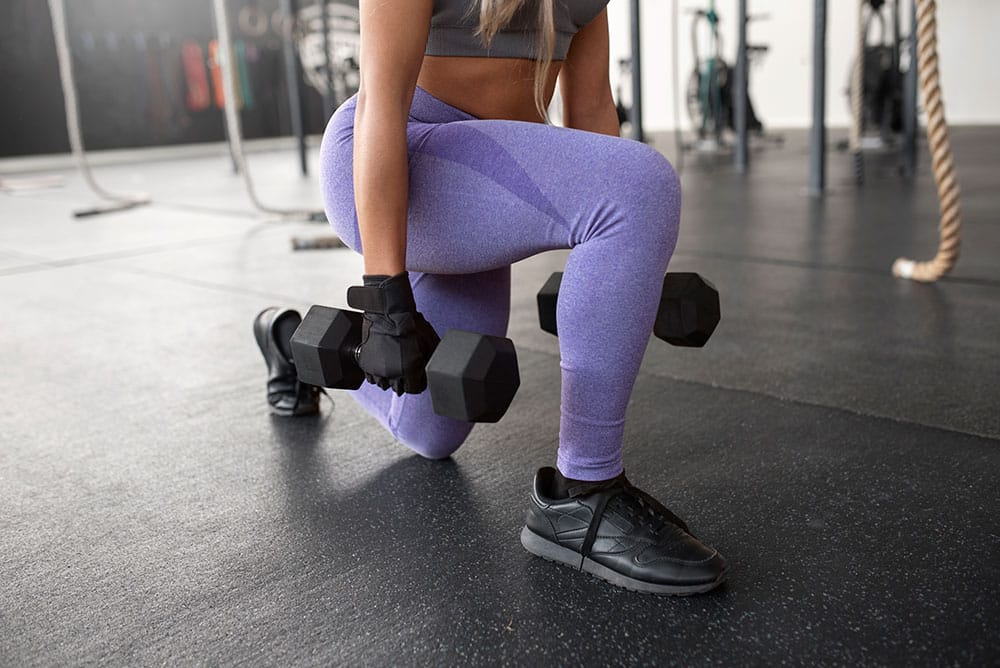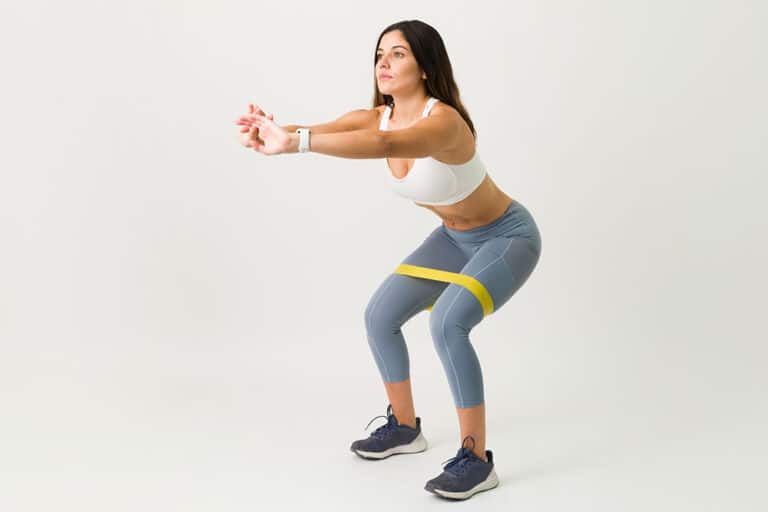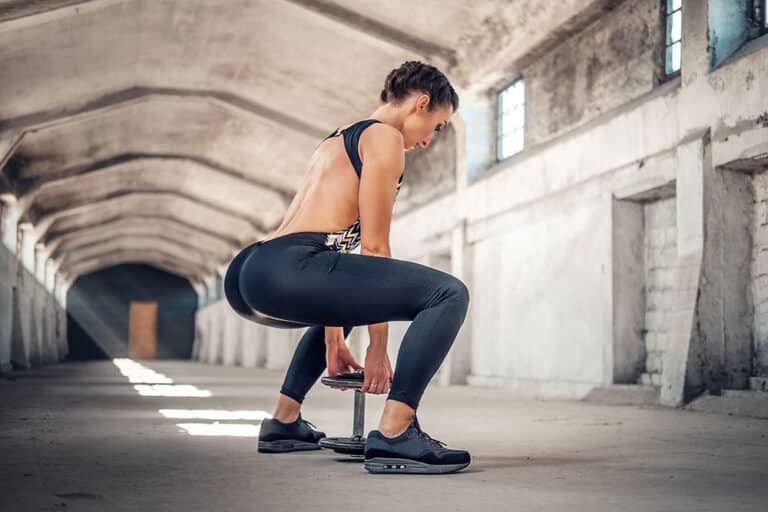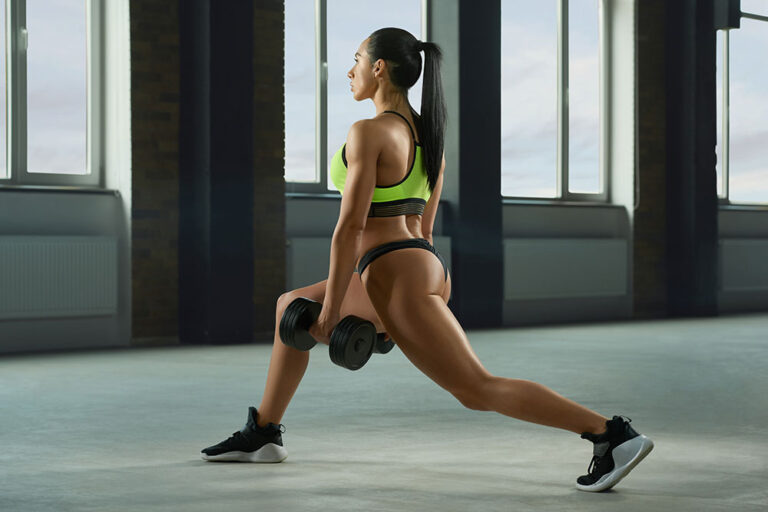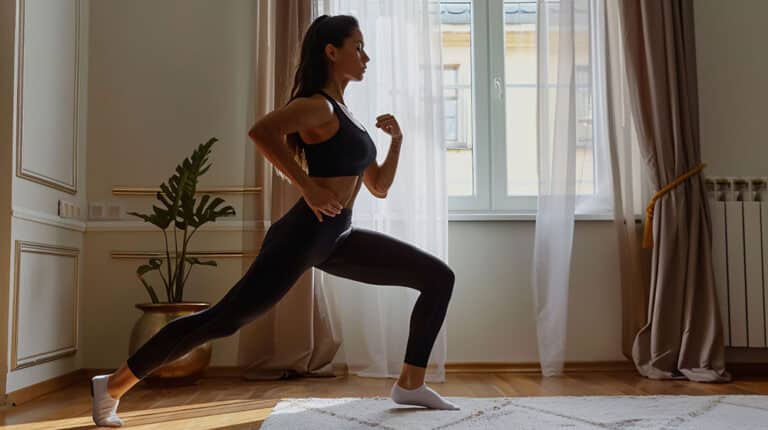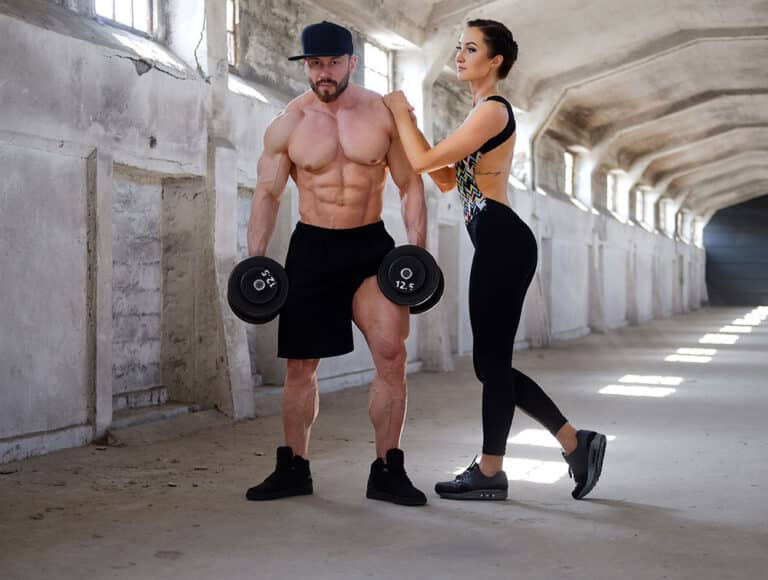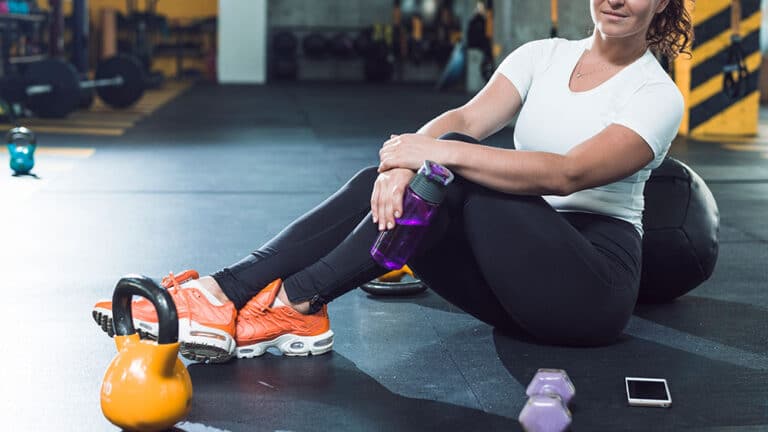Building Leg Muscle Without Weights
Understanding how to build leg muscle without weights involves recognizing the importance of leg strength and the unique benefits that bodyweight leg exercises offer.
Importance of Leg Strength
Leg strength is crucial for achieving overall fitness goals and making everyday tasks easier. Whether it involves lifting weights, walking up stairs, or picking up a child, strong leg muscles are essential. Strong legs support better balance, enhance sports performance, and reduce the risk of injury.
Leg muscles are among the largest muscle groups in the body and include:
- Quadriceps
- Hamstrings
- Glutes
- Adductors
- Calves
Building strength in these muscles ensures efficient movement and overall body stability. Core stabilization is also involved, which strengthens core muscles.
Benefits of Bodyweight Leg Exercises
Bodyweight leg exercises focus on using your own body weight as resistance to build muscle strength and endurance. They are excellent options for individuals of all fitness levels, from beginners to advanced athletes. Here are the key benefits:
- Convenience and Flexibility: Bodyweight leg exercises can be done almost anywhere, making it convenient for those traveling or unable to access a gym. Exercises like bodyweight squats and lunges require no equipment.
- Cost-Effective: No need for expensive gym memberships or equipment. This makes it accessible for everyone.
- Improved Functional Strength: These exercises mimic natural movements, improving functional strength and everyday performance.
- Low Impact: They are generally lower impact on joints compared to weightlifting, making them suitable for people with joint concerns.
Key Bodyweight Leg Exercises:
- Bodyweight Squats: Targets quadriceps, hamstrings, glutes, adductors, and calves. Learn proper how to do bodyweight squats.
- Lunges: Also targets the same muscle groups with added stability challenges.
Bodyweight leg exercises, such as jump squats and rear-elevated split squats, are notably beneficial for those wanting to build foundational strength before progressing to weights. For a quick and effective workout, try this quick leg workout no equipment.
Essential Bodyweight Leg Movements
Incorporating a variety of movements can help meet different fitness goals:
| Exercise | Primary Muscles Targeted | Benefits |
|---|---|---|
| Squats | Quadriceps, Hamstrings, Glutes | Functional strength, core stability |
| Lunges | Quadriceps, Hamstrings, Glutes | Balance, unilateral strength |
| Jump Squats | Quadriceps, Hamstrings, Glutes | Power, explosive strength |
| Pistol Squats | Quadriceps, Hamstrings, Glutes | Advanced strength, balance |
Explore our detailed guides on movements like how to do pistol squats and plyometric exercises for legs to further enhance your workout routine.
In conclusion, building leg muscles without weights is achievable and offers multiple benefits. By incorporating a variety of bodyweight exercises and maintaining proper technique, anyone can develop strong and functional legs. For a structured routine, consider trying our bodyweight leg challenge.
Primary Bodyweight Leg Exercises
To achieve strong, toned legs without the use of weights, incorporating primary bodyweight exercises such as squats and lunges can be highly effective. These exercises utilize your body weight to challenge and build leg muscles, providing numerous benefits for strength, stamina, and overall leg health. Here, we explore the basics and variations of squats and lunges.
Squats and Their Variations
Squats are a fundamental movement pattern that trains the quadriceps, hamstrings, glutes, adductors, and calves. They also require core stabilization, which strengthens the muscles of the core (Healthline).
Basic Bodyweight Squat
To perform a basic bodyweight squat:
- Start Position: Stand with feet shoulder-width apart.
- Movement: Lower your body by bending at the hips and knees, keeping your back straight and core engaged.
- Depth: Aim to lower your hips until your thighs are parallel to the ground.
- Return: Push through your heels to return to the starting position.
Table: Reps and Sets Recommendations
| Experience Level | Sets | Repetitions |
|---|---|---|
| Beginner | 2 | 8-10 |
| Intermediate | 3 | 12-15 |
| Advanced | 3-4 | 15+ |
Figures courtesy (Outside Online)
Variations
- Pistol Squats: A challenging variation performed on one leg, requiring balance and strength.
- Sumo Squats: Stand with feet wider than shoulder-width and toes pointed out.
- Jump Squats: Add a jump at the top of each squat to incorporate explosive power and plyometrics.
For details, visit our article on how to do bodyweight squats.
Lunges and Their Variations
Lunges are another excellent bodyweight exercise that targets the quads, hamstrings, glutes, and calves while also improving stability and coordination.
Basic Bodyweight Lunge
To perform a basic bodyweight lunge:
- Start Position: Stand tall with feet together.
- Movement: Step one foot forward and lower the other knee towards the ground.
- Depth: Bend both knees until the back knee is just above the floor.
- Return: Push back up to the starting position.
Table: Reps and Sets Recommendations
| Experience Level | Sets | Repetitions (each leg) |
|---|---|---|
| Beginner | 2 | 8-10 |
| Intermediate | 3 | 12-15 |
| Advanced | 3-4 | 15+ |
Variations
- Reverse Lunges: Step backward instead of forward to target the hamstrings and glutes more.
- Walking Lunges: Perform lunges while walking forward.
- Side Lunges: Step to the side instead of forward to target the inner thighs and adductors.
For a complete guide on lunge variations, visit our article on bodyweight lunge variations.
Incorporating these primary bodyweight leg exercises into your routine can significantly enhance leg strength and muscle growth. For more challenges and advanced variations, explore our bodyweight leg challenge.
Intensifying Bodyweight Leg Workouts
To effectively build leg muscle without weights, it’s important to intensify bodyweight leg workouts. Incorporating jump squats, plyometrics, single-leg exercises, and explosive movements can take your leg training to the next level.
Jump Squats and Plyometrics
Jump squats can be performed to add intensity to bodyweight leg training. Considered a plyometric exercise, jump squats utilize the natural elasticity of muscles for explosive movements (Healthline). Plyometric exercises are excellent for building power and improving overall leg strength. Here are a few effective plyometric exercises:
Jump Squat
- Start in a squat position.
- Push through your heels and jump into the air.
- Land softly back into the squat position.
- Repeat for 10-15 reps.
Pop Squats
- Stand with feet together.
- Jump into a squat position with feet wide apart.
- Quickly jump back to the starting position.
- Repeat for 10-15 reps.
Jump Lunges
- Start in a lunge position.
- Explosively jump and switch legs in midair.
- Land with the opposite leg forward.
- Repeat for 10-15 reps per leg.
For more plyometric exercises, visit our plyometric exercises for legs article.
Single-Leg Exercises and Explosive Movements
Incorporating single-leg exercises challenges the strength and balance of individual legs, making them highly effective for enhancing muscle growth (SELF). Explosive movements like pop squats and jump lunges also work on power and add a cardio element to your routine.
Single-Leg Squats (Pistol Squats)
- Stand on one leg with the other leg extended forward.
- Lower your body into a squat, keeping the extended leg off the ground.
- Push through your heel to return to the starting position.
- Repeat for 5-10 reps per leg.
For proper technique, check out how to do pistol squats.
Bulgarian Split Squats
- Stand in front of a bench, facing away from it.
- Place one foot on the bench behind you.
- Lower your body until your front thigh is parallel to the ground.
- Push through the front heel to return to the starting position.
- Repeat for 10-15 reps per leg.
Pop Squats
- Stand with feet together.
- Jump into a squat position with feet wide apart.
- Quickly jump back to the starting position.
- Repeat for 10-15 reps.
Jump Lunges
- Start in a lunge position.
- Explosively jump and switch legs in midair.
- Land with the opposite leg forward.
- Repeat for 10-15 reps per leg.
For more tips on bodyweight single-leg and explosive exercises, explore the bodyweight leg challenge.
By incorporating these intensive exercises into your routine, you can maximize your bodyweight leg workouts. Always prioritize proper technique to prevent injury and get the most out of your exercises.
Enhancing Leg Muscle Growth
Importance of Diet for Muscle Building
Exercise alone isn’t enough to achieve optimal muscle growth. Diet plays a crucial role in building leg muscles, especially when relying on bodyweight exercises. Ensuring a balanced intake of macronutrients and micronutrients is essential.
The National Academy of Sports Medicine recommends consuming 0.7 to 0.8 grams of protein and 1.8 to 3.2 grams of carbohydrates per pound of body weight each day for muscle growth (CNET). Protein is necessary for muscle repair and growth, while carbohydrates provide the necessary energy for workouts. Fats, particularly healthy fats, play a role in overall well-being and hormone regulation, crucial for muscle building.
| Nutrient | Recommended Intake | Sources |
|---|---|---|
| Protein | 0.7-0.8 g/lb body weight | Fish, soybeans, lean meats |
| Carbohydrates | 1.8-3.2 g/lb body weight | Whole grains, fruits, vegetables |
| Fats | Varied | Olive oil, nuts, avocados |
For more detailed tips on exercises, consider visiting our pages on how to do bodyweight squats and bodyweight lunge variations.
Nutrient-Rich Foods for Muscle Growth
Proper nutrition fuels your body and supports muscle growth. Here are some key nutrient-rich foods beneficial for enhancing leg muscles:
-
Fish (Salmon, Tuna): Rich in lean protein and omega-3 fatty acids, fish aids in muscle performance and mass retention. Omega-3s also help reduce inflammation and promote recovery.
-
Soybeans: These nutrient-dense legumes provide all nine essential amino acids, making them perfect for muscle building, particularly in vegetarian or vegan diets.
-
Extra Virgin Olive Oil: Known for its monounsaturated fats, olive oil can help reduce inflammation and slow muscle breakdown, supporting your muscle-building efforts (CNET).
-
Whole Grains: Providing complex carbohydrates and fiber, whole grains like oats and quinoa offer sustained energy for intense workouts.
-
Nuts and Seeds: Packed with healthy fats, protein, and minerals, nuts and seeds like almonds and chia seeds are excellent for muscle health.
-
Lean Meats: Chicken, turkey, and lean cuts of beef provide high-quality protein essential for muscle repair and growth.
In addition to focusing on these nutrient-rich foods, ensure that you are hydrating adequately and maintaining a balanced diet. For more information on enhancing workouts without equipment, check out our quick leg workout no equipment and calf exercises without weights.
Maximizing Bodyweight Leg Exercises
To effectively build leg muscle without weights, mastering bodyweight exercises is crucial. Among these, bodyweight squats stand out due to their ability to target major muscle groups such as the quadriceps, hamstrings, glutes, back, and core muscles (Exakt Health).
Proper Technique for Bodyweight Squats
Executing a bodyweight squat correctly ensures you reap the full benefits and avoid injury. Follow these steps for proper technique:
- Foot Position: Place your feet shoulder-width apart with your toes pointing slightly outward. Distribute your weight evenly across your feet.
- Descent: Begin the movement by bending at the hips and knees simultaneously. Keep your knees aligned with your hips and ankles.
- Depth: Squat down as low as possible without compromising your form. Aim to have your thighs parallel to the ground or lower.
- Core Activation: Engage your core muscles to keep your lower back and pelvis in a neutral position.
- Ascent: Push through your heels to return to the starting position. Maintain an upright chest and activated core throughout.
A proper breathing technique is key. Inhale as you lower into the squat and exhale as you rise. This helps with the transfer of forces and flow of movement, making the exercise feel more efficient (Exakt Health).
Common Mistakes to Avoid
Avoiding common mistakes ensures the exercise is safe and effective. Here are frequent errors and how to correct them:
| Mistake | Impact | Correction |
|---|---|---|
| Knees Collapsing In/Out | Increases stress on knee joints, reduces exercise effectiveness | Keep knees aligned with hips and ankles |
| Heels Lifting Off Ground | Reduces stability and targets incorrect muscles | Distribute weight evenly, press through heels |
| Chest Dropping Forward | Leads to improper engagement of leg muscles, increases lower back strain | Maintain an upright chest |
| Excessive Lower Back Rounding | Causes lower back strain | Engage core, keep pelvis neutral |
Figures courtesy Exakt Health
To maximize your leg workouts safely, follow this guide and focus on your technique. For those looking to add variety, consider learning about bodyweight lunge variations or explore our quick leg workout no equipment.
Progressing With Bodyweight Leg Workouts
To maximize the benefits of how to build leg muscle without weights, it is essential to progress your workouts by adding variations, challenges, and following tailored recommendations for reps and sets.
Adding Variations and Challenges
A crucial aspect of bodyweight workouts is to introduce diverse exercises and challenges to keep your muscles continually adapting and growing. Incorporate single-leg exercises and explosive movements to amplify the intensity of your workouts.
- Single-Leg Exercises:
- Pistol Squats: A highly challenging movement that targets the legs and core. Learn how to master this exercise by visiting how to do pistol squats.
- Single-Leg Deadlifts: Focus on balance and hamstring strength.
- Lunges Variations: Such as reverse lunges or curtsy lunges. Discover more at bodyweight lunge variations.
- Explosive Movements:
- Jump Squats: Enhance leg power and cardiovascular health.
- Pop Squats and Jump Lunges: Effective for muscle strength and endurance (SELF). Learn more about similar routines at plyometric exercises for legs.
Including these variations in your routine keeps workouts engaging and helps to prevent plateaus.
Recommendations for Reps and Sets
Proper structuring of reps and sets is essential for muscle growth and stamina. The following table provides guidance tailored to different skill levels:
| Skill Level | Exercise Type | Sets | Reps |
|---|---|---|---|
| Beginner | Bodyweight Squats, Lunges | 2 | 8-10 |
| Intermediate | Single-Leg Exercises, Explosive Movements | 3 | 10-12 |
| Advanced | Pistol Squats, Jump Squats | 3-4 | 15+ (or to failure) |
Studies show muscle hypertrophy is more challenging with bodyweight exercises due to the lack of external weights. Therefore, advanced athletes may need to perform sets until failure or exceed 15 reps per set to see substantial muscle gains (Outside Online).
For further reading on exercise progressions, discover how to add variations and challenges to your leg day routine and check our leg workout frequency bodyweight recommendations for optimal results.
- About the Author
- Latest Posts
Johnnie D. Jackow Sr., the founder and CEO of Total Body Fitness, Worldwide, has a long-standing career in the fitness industry. He began as a certified personal trainer in the mid-90s and soon after authored his first weight loss book in 1998. This led to the launch of Total Body Fitness, Nationwide in the USA at the same time. Johnnie gained recognition as the fitness guru of his time, running infomercials on local TV late at night in Houston, Texas. Over the years, he has helped more than 40,000 individuals from all over the world achieve their health and fitness goals. With over 60,000 hours of documented training in integrative functional medicine, he completed his PhD in human physiology in 2010. His primary objective is to assist people in reaching their health and fitness goals through alternative approaches rather than relying solely on conventional medicine and pharmaceutical drugs. Today, with almost three decades of experience under his belt, Johnnie continues to be a leader in health and fitness.

